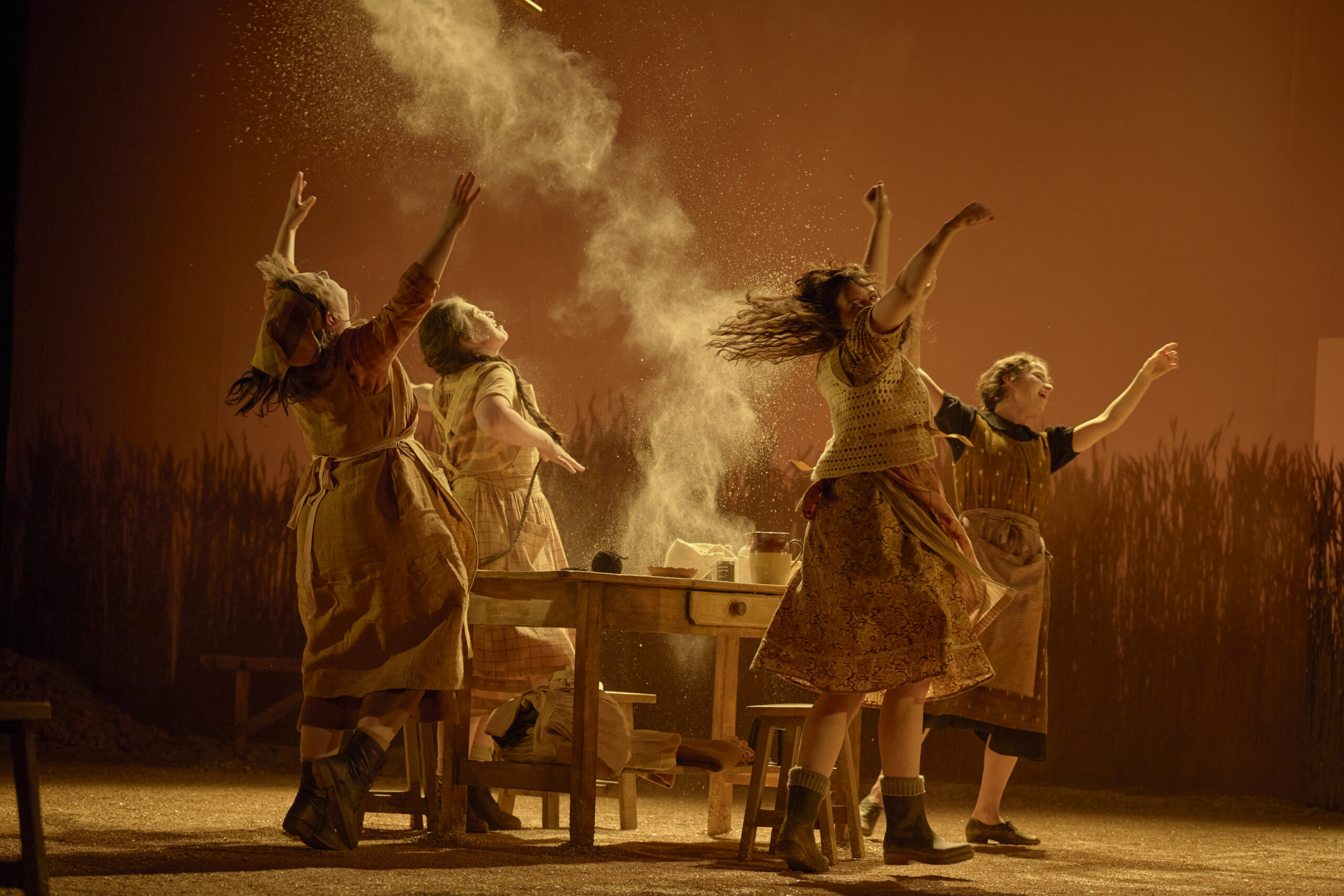When attending Gate’s production of Dancing at Lughnasa it is not hard to see why the play translated so well to English and American audiences after its opening in 1990. It was playwright Brian Friel’s most successful play, for which he earned his only Tony and Olivier awards.Though arguably Ireland’s most acclaimed playwright, some of Friel’s plays flopped when they opened overseas. For example, Faith Healer’s experimental form and The Freedom of the City’s political content were resolutely condemned by critics in America and England. Dancing at Lughnasa is less directly political and far more conventional in terms of its form, and therefore more widely accessible than some of Friel’s other works. It is a domestic drama with comic flourishes and sudden outbursts of music and dance. This production, however, does not let the play’s deeper poignancy out of its sight in its moments of humour and spectacle.
The play follows five unmarried sisters over the month of August in 1936. It explores the sisters’ dynamic within the household and the way that the pressures of the period affect them. Each of the sisters are brought to life brilliantly by the actors. Their apparent familiarity with one another and the accuracy of their accents make them really believable as a group of sisters. Ruth MacNeill deserves particular praise for allowing us past the hardened exterior of Kate, the eldest, to her deeper motivations despite having limited opportunities to do so given the size of the ensemble. The play is narrated by the son of one of the sisters, Michael, who as an adult recalls these events from his childhood. The sparsely decorated stage and warm lighting gives the sense of a hazy childhood memory from which important details are irretrievable.
Michael’s childhood self is an invisible presence on the stage which other actors mime with while adult Michael speaks his lines. This absence serves to constantly remind us of the fact that the play is being told through Michael’s memory rather than directly. There is a tender, nostalgic sense to the play which is strongest when Michael speaks directly to us. This production is keenly aware of this and clearly works to give added potency to these emotions. Michael’s narrations are accompanied by traditional Irish airs that heighten our sense of his yearning for the past. Lighting works in tandem with this to remind us of the subjective quality of the narrator’s perspective. The lighting creates an orange glow on the stage that softens the scenes that occur during the past. This orange moves abruptly to a sobering blue when Michael returns us to the present. This lighting cue demonstrates the intentionality of the deployment of nostalgia as a feeling in the play.
Friel’s play feels aware of the controversy that has been stirred by depictions of the Irish countryside in the 20th century. Many Irish writers have been accused of exaggerating the bleakness of life in the countryside, while politicians of the period tried to romanticise rural life to obscure their own failings. Despite the sense of nostalgia in the play, Dancing at Lughnasa does not romanticise Irish country life in the 1930s. The sentimentality felt in the play is for the women in Michael’s family, rather than the way of life that was had at that time. Dancing at Lughnasa straddles this line between bleak and nostalgic because there is much joy in the relationship these sisters have, not because Friel is not engaging with the darker issues which plagued women in rural Ireland at the time. Throughout the play Friel remains staunchly critical of various systems of belief and power which affected the lives of the women in this period.
The brilliance of Dancing at Lughnasa is how Friel manages to convey the bleakness and limitations of Irish life in the early 20th century for women while simultaneously portraying these women as vibrant, individual and funny. The play criticises the way Ireland’s religiously patriarchal culture limited women’s self expression. But it does not do this by staging dark scenes of women’s oppression like many other Irish works. Instead, we see characters hindered by societal pressures strive and fail to truly express themselves. The character’s are not reduced to simply being victims of oppressive systems. Instead we see through their characterization how they are oppressed, as they reach for fuller, more confident expression but are prevented by social norms. Nowhere is this more effective than in the dance sequence, from which the director Caroline Byrne and movement director Sue Mythen have mined all possible meaning. The sisters lose control to a pounding reel in a mad, uninhibited, savage dance. A moving eruption that is followed by a quiet moment of collective embarrassment once the wireless dies.
★★★★★
Dancing at Lughnasa runs until Saturday 21st September at the Gate Theatre, Dublin.







